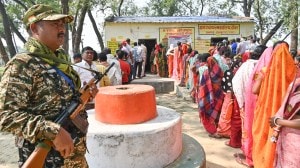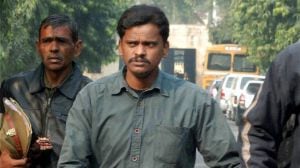A rare pilgrimage through the Ghats
In my first job in a national management institute by far the best student was Vasant Gangavene. His peers are CMDs of multinational and ...

In my first job in a national management institute by far the best student was Vasant Gangavene. His peers are CMDs of multinational and other companies, but after going to Harvard he went back to work with his people in the Ghats near Ratnagiri. In 1986 he touched base with me again in the Planning Commission. He had this burning faith that technology and organisation would turn the Ghats from a liability to an engine of growth.
He started with schemes of improving tools and mechanisation. In Ahmedabad, Girja Sharan, with an agricultural degree from Cornell, teaching at the IIM, had convinced me that understanding traditional practices and making practical improvements go a long way. He also got to know that the state agro-corporations had an inventory of machines of Rs. 600 crore no one wanted to buy and small entrepreneurs who knew agriculture had produced some marvellous tools making India a small tool export superpower.
But getting back to Gangavene. He was going on to seeds and watershed developmentand above all diversification. He wanted anyhow his people to move away from growing low yielding crops, starving themselves and destroying the Ghats. In his small village of Kuve where he had bought the lovely little house of the khot, he talked of the many ways of adding value to cocum and how water would make his people prosperous and the Ghats green again. He had picked up the computer bug of the early Rajiv period and had started classes for the youngsters of his village at Ratnagiri.
Hundreds of kilometers away, the Dharamasthala Temple Trust is off the coast of Mangalore. Veerendra Heggade, its present chief, is highly trained and modern in his outlook. He also decided to go for immortality which comes from going into the hearts of fellowmen. For centuries the poor peasants of this part of the Ghats lived also on charity from his great predecessors through generations.
Heggade decided to put an end to all this and make them self-reliant. In 1990 the Syndicate Bank headquarters in Manipal told methat he was implementing the agroclimatic strategy I talked about when I was in the Planning Commission and I should go there. Heggade had worked out a holistic system. The technology of tree crops substituting low yield cereals was well-known. Heggade prepared support with finance inputs and extension. More important, a card for each household as an entity.
Each labour-day spent in designated activities was recorded there. Poor peasants need to eat and so can’t spend labour on water harvesting, orchards and moats to save them. Heggade gave them a bushel of rice for every day put in. By the time I reached there, the trees had grown up and the peasants were rich in forest wealth. Organisation had sprung up for marketing, agroprocessing, inputs and ancilliaries. They were worrying about the next phase training, education, health, welfare; the Syndicate Bank monitoring and evaluating, apart from financing. Heggade has also organised an amazingly efficient temple setup where on peak days upto a lakh devoteescan be fed nutritious, hygenic food in clean surroundings, cooked in an energy efficient manner, most unusual for a temple.
Meanwhile in the Panchmahals, Harnath Jagawat was working with a simple idea. Even in the summer lean months he said some of the hill streams in this area, the end of the Arravallis, had flowing waters. Jagawat’s adivasis lived in the slopes. So, he said, he would lift the water to them. The skeptics said the hydrology was bad and it was energy inefficient. But Jagawat’s Sadguru Seva Sangh stuck on. By the late ’80s thousands of hectares were irrigated and thousands of adivasi families had escaped the hunger trap, forced migration and were experimenting with new agricultural technologies.
The European Commission picked him up and gave him the largest grant to any NGO. Norad, Ford Foundation and the Agha Khan Foundation joined. Jagawat always kept his home base and Gujarat Government support. He then cautiously felt his way into adjoining Rajasthan.
Learning a lot from chairing hisadvisory committee, I got my friend U.R. Rao to do a satellite imagery of the ridge at JNU and when we wanted to build our first check dams, we found how difficult it was. The Jagawat’s, however, had perfected the technology and now JNU has with the help of the CGWB the only successful watershed in Delhi. After the first rain the water accumulated behind the check dam disappeared faster than predicted, showing that the confined aquifier had conditions better than expected from model studies.
In a sense the preconditions are all ready there for such experiments to be repeated on a very large scale. The guidelines of the Jawahar Rozgar Yojana allow employment on labour for tree crops or in constructing soil and water management structures. In many states with expenditures of hundreds of crores of rupees, such experiments are there in a few hectares. It is now possible to build concrete plans for projects of the kind discussed for each of the hundred odd districts in the hill and plateaux agricuulturalsub-regions of India and to achieve these targets with hardly any further commitment of resources. Supplemental resources will be required mainly on extension and input support organisations. Most of the additional resources needed will be bankable.
As the Sabhapati of the Purulia Zilla Parishad wrote to one of my successors in the Planning Commission, "I don’t need any more money. Only let me implement the agroclimatic plan." Insha Allah.



- 01
- 02
- 03
- 04
- 05




























